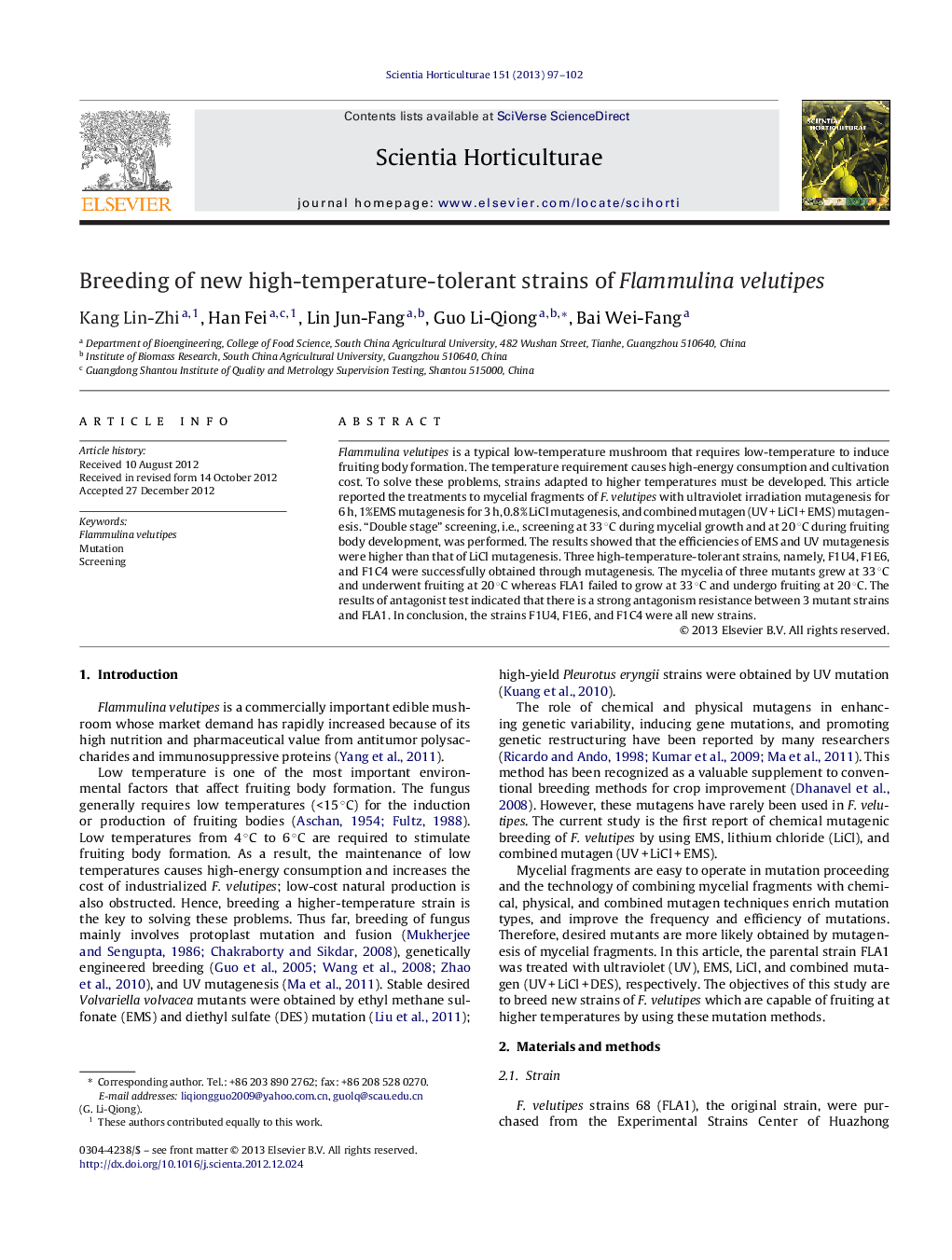| Article ID | Journal | Published Year | Pages | File Type |
|---|---|---|---|---|
| 4567413 | Scientia Horticulturae | 2013 | 6 Pages |
Flammulina velutipes is a typical low-temperature mushroom that requires low-temperature to induce fruiting body formation. The temperature requirement causes high-energy consumption and cultivation cost. To solve these problems, strains adapted to higher temperatures must be developed. This article reported the treatments to mycelial fragments of F. velutipes with ultraviolet irradiation mutagenesis for 6 h, 1%EMS mutagenesis for 3 h, 0.8% LiCl mutagenesis, and combined mutagen (UV + LiCl + EMS) mutagenesis. “Double stage” screening, i.e., screening at 33 °C during mycelial growth and at 20 °C during fruiting body development, was performed. The results showed that the efficiencies of EMS and UV mutagenesis were higher than that of LiCl mutagenesis. Three high-temperature-tolerant strains, namely, F1U4, F1E6, and F1C4 were successfully obtained through mutagenesis. The mycelia of three mutants grew at 33 °C and underwent fruiting at 20 °C whereas FLA1 failed to grow at 33 °C and undergo fruiting at 20 °C. The results of antagonist test indicated that there is a strong antagonism resistance between 3 mutant strains and FLA1. In conclusion, the strains F1U4, F1E6, and F1C4 were all new strains.
► EMS, UV, LiCl, and UV + LiCl + EMS compound mutation mutagenesis of fragments for breeding of Flammulina velutipes. ► Established “Double stage” screening system to select candidate mutants. ► Obtained three high-temperature-tolerant strains by EMS, UV and compound mutation, respectively.
